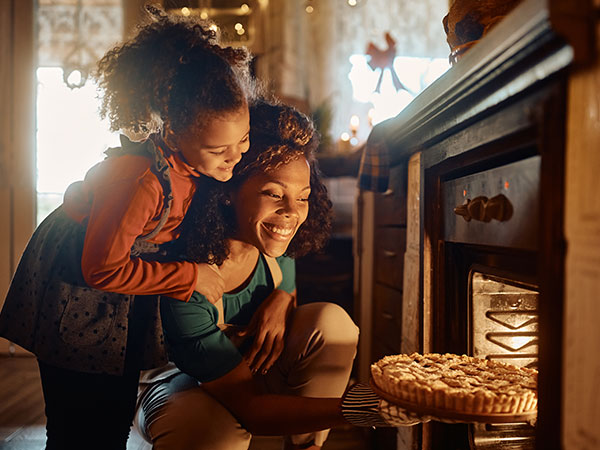Eat, drink and be merry with these simple home food safety tips!
Reckless Thawing
- Old Habit: Thawing frozen turkey or other meats on the kitchen counter or under hot water in the kitchen sink.
- New Tradition: To prevent the spread of harmful bacteria, frozen meats and poultry should be thawed in a refrigerator set at or below 40°F. If pressed for time, you can thaw a wrapped frozen turkey in a sink filled with cold tap water, making sure to change the water every 30 minutes. Depending on the size of the turkey, it may be defrosted in the microwave, but check the owner's manual and be prepared to cook it right after thawing. A frozen turkey also can be cooked in the oven to its safe, minimum internal temperature of 165°F, but it will take longer to cook than if it is thawed first.
Holding Out on Hot Stuff
- Old Habit: When preparing a cooked dish that needs to chill (for storage or serving purposes), many people think it's necessary to wait until foods cool before putting them in the refrigerator.
- New Tradition: To ensure the freshness and safety of your freshly cooked foods, place them promptly in the refrigerator after cooking. Using shallow containers will allow them to cool more quickly.
Covered Dish Delivery
- Old Habit: Holiday festivities with family and friends may require travel, which can result in long car rides for both guests and dishes brought along to share.
- New Tradition: Pay close attention to how much time your prepared dish will be out of the refrigerator or oven. A cold dish can be packed in a cooler with ice packs to keep it cold while traveling. Hot dishes can be transported in an insulated bag that is intended to keep foods hot or covered with foil and insulated with towels. Cold dishes should be kept under 40°F and hot dishes above 140°F. If it is outside these temperature zones for two hours or more, it should be discarded.
Rocking the Gravy Boat
- Old Habit: While most home cooks remember to bring gravy to a boil before serving it, many forget the same rule also applies during the encore presentation.
- New Tradition: In order to eliminate harmful bacteria, always bring leftover gravy to a boil on the stove before serving it a second time. Any leftover gravy should be used within three to four days.
Festive Floor-Grazing
- Old Habit: The "five-second-rule" isn't just popular with children, many adults also say they abide by a specific "rule" to determine how long food is safe to eat after it falls on the floor.
- New Tradition: Tragic as it may be when a holiday treat topples to the ground, it's never a good idea to eat it. In the spirit of "out with the old, in with the new," toss it.
Find a Nutrition Expert
Looking for credible nutrition information and recommendations? The Academy of Nutrition and Dietetics' network of credentialed food and nutrition practitioners are ready to help!
